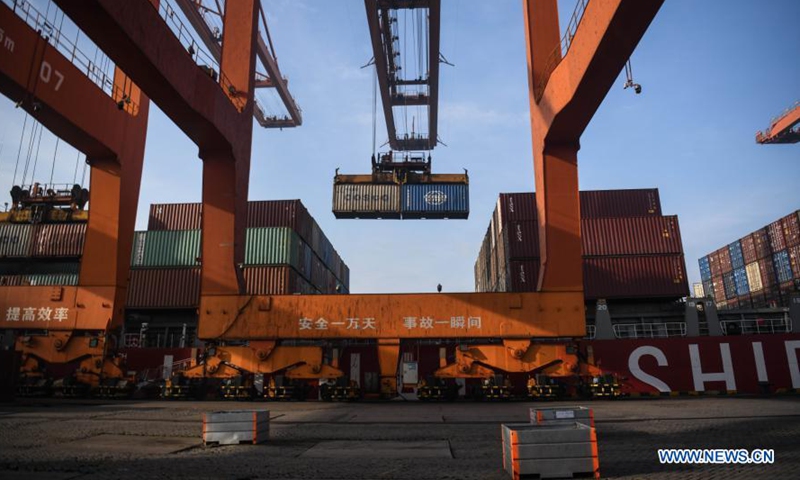
Photo taken on Dec. 28, 2020 shows containers being handled at the Qinzhou Port in south China's Guangxi Zhuang Autonomous Region. (Xinhua/Zhang Ailin)
China's top economic planner said on Thursday that the country aims to finish building the New International Land-Sea Trade Corridor by 2025, a logistics channel that would facilitate trade with ASEAN members as well as countries and regions along the China-proposed Belt and Road Initiative (BRI).
In a document issued on Thursday, the National Development and Reform Commission (NDRC) said the corridor would be efficient, convenient, green and safe. The move is crucial as such a massive transport link has become increasingly significant since the coronavirus disrupted global supply chains and the movement of trade.
The plan covers major road, railway and port projects. Specifically, it aims to increase the capacity of rail-sea combined transport to 500,000 twenty-foot equivalent units and the number of cross-border freight trains to 2,000.
In 2020, 4,607 trains of the rail-sea combined transport mode and 1,264 China-Vietnam cross-border freight trains were dispatched, up 105 percent and 23.2 percent year-on-year.
Beibu Gulf Port in South China's Guangxi Zhuang Autonomous Region has opened 52 shipping routes and the Yangpu Port in South China's Hainan Province has opened 33 routes, reaching more than 100 countries and regions.
The strategy of building the New International Land-Sea Trade Corridor is closely linked to the BRI, the Yangtze River Economic Belt and the Guangdong-Hong Kong-Macao Greater Bay Area, Zhou Xiaoqi, an official with the NDRC, told a press conference on Thursday.
"In addition, once goods can go from Southwest China to the southern part or the Yangtze River direction, the corridor could reduce the navigation capacity burden of the Three Gorges Dam and provide more options for shipping goods," Zhou said.
In terms of facilitating inspection and quarantine at customs, an official with the customs authority said that after negotiating with ASEAN members, China has established a digital review mechanism for seafood imports from Vietnam and fruit imports from Thailand faster and more conveniently.
In the first seven months of 2021, 3,440 trains of the rail-sea combined transport mode under the corridor were dispatched, growing 63 percent compared with the same period last year, even though the global shipping industry was significantly disrupted by the COVID-19 pandemic.
Global Times




